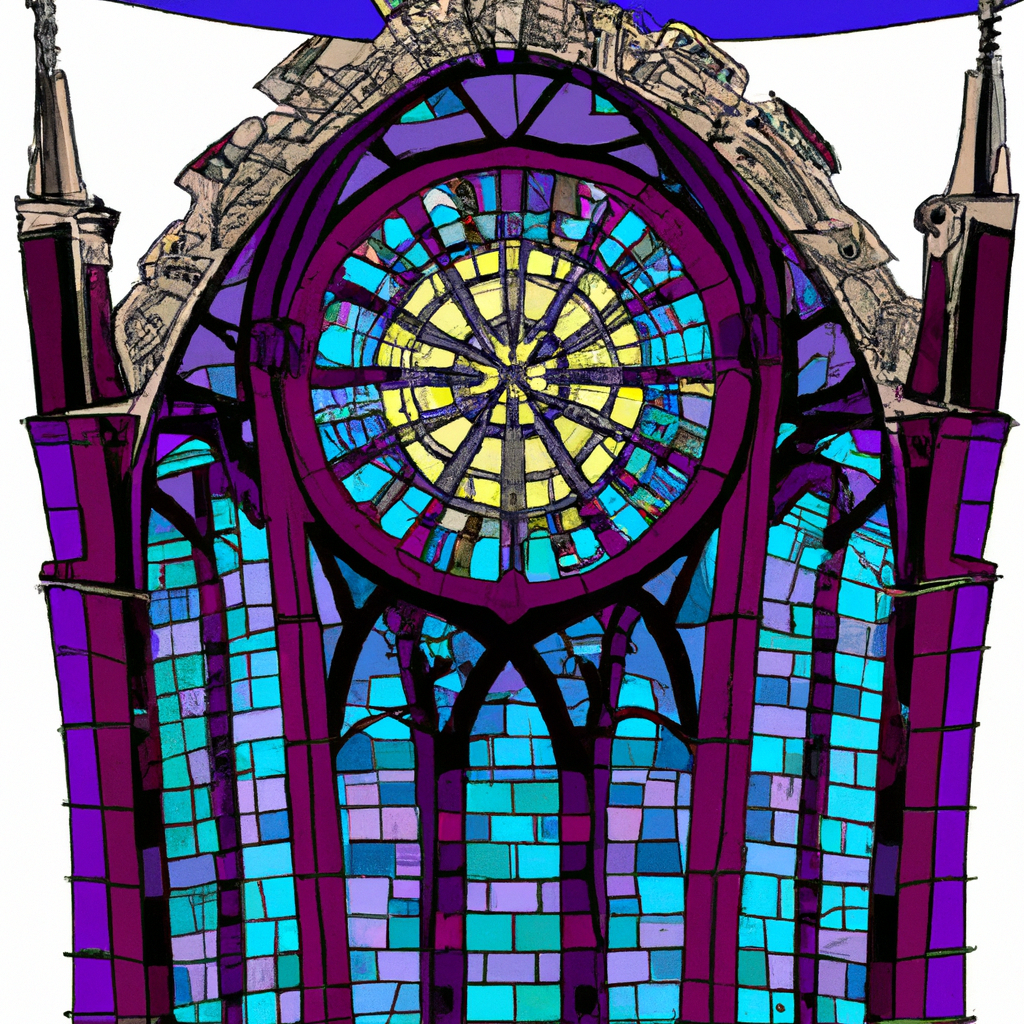Unveiling the Mystery: The Golden Ratio in Mathematics and Art
Discover the intriguing connection between mathematics and art through the exploration of the Golden Ratio, a divine proportion that has captivated the minds of scholars and artists throughout history.
Last Updated: 10/17/2023
The Fascinating History of the Golden Ratio

Ancient Origins and Cultural Significance
The Golden Ratio, also known as the Divine Proportion, is a mathematical constant that has captivated the human imagination for centuries. Its origins can be traced back to ancient civilizations, where it held great cultural and artistic significance.
One of the earliest known mentions of the Golden Ratio can be found in the mathematical texts of ancient Egypt, dating back to around 3000 BCE. The Egyptians believed that the Golden Ratio had divine properties and used it in their architectural designs and artwork.
The ancient Greeks, particularly the mathematician Euclid, explored the mathematical properties of the Golden Ratio in depth. They considered it to be the most aesthetically pleasing ratio and used it extensively in their architecture, sculpture, and even music.
The Golden Ratio also found its way into the art and architecture of other cultures. In medieval Europe, it was used in the construction of cathedrals and religious art. In Renaissance Italy, artists like Leonardo da Vinci and architects like Filippo Brunelleschi incorporated the Golden Ratio into their masterpieces, believing it to be a key to beauty and harmony.
Even today, the Golden Ratio continues to fascinate and inspire artists, architects, and mathematicians alike. Its presence can be found in nature, such as the spiral patterns of seashells and the branching of trees. This universal appeal and timeless significance make the Golden Ratio a truly remarkable phenomenon in human history.
Mathematics: Understanding the Golden Ratio

The Mathematical Definition and Relationship to Fibonacci Numbers
The Golden Ratio, often denoted by the symbol phi (Φ), is a mathematical constant that is approximately equal to 1.61803398875. It is an irrational number, which means it cannot be expressed as a fraction of two integers. The Golden Ratio has fascinated mathematicians, artists, and scientists for centuries due to its aesthetic and mathematical properties.
The Golden Ratio can be defined mathematically as follows:
Given a line segment AB, the Golden Ratio is achieved when the ratio of the length of the whole segment (AB) to the longer segment (AC) is equal to the ratio of the longer segment (AC) to the shorter segment (CB). This can be expressed as:
AB/AC = AC/CB
The Golden Ratio can also be obtained by solving the quadratic equation x^2 - x - 1 = 0. The positive solution to this equation represents the Golden Ratio.
The Golden Ratio is closely related to the Fibonacci sequence, which is a sequence of numbers in which each number is the sum of the two preceding ones: 0, 1, 1, 2, 3, 5, 8, 13, 21, 34, and so on. The ratio of any two consecutive Fibonacci numbers approaches the Golden Ratio as the sequence progresses. For example, the ratio of 13 to 8 is approximately equal to 1.625, which is very close to the Golden Ratio.
In addition, the relationship between the Fibonacci sequence and the Golden Ratio can be observed in nature, art, and architecture. Many natural phenomena, such as the arrangement of petals in a flower, the branching of trees, and the spiral patterns in seashells, exhibit proportions that are close to the Golden Ratio. Similarly, artists and architects have used the Golden Ratio to create aesthetically pleasing compositions and designs.
Overall, the Golden Ratio is a fascinating mathematical concept that has numerous applications and connections to other areas of mathematics and the natural world.
The Golden Ratio in Visual Harmony

Incorporating the Golden Ratio in Art and Architecture
The Golden Ratio, often represented by the Greek letter phi (Φ), is a mathematical ratio that has been used in art and architecture for centuries. It is a proportion that is considered visually pleasing and has been used to create aesthetically balanced compositions.
Artists and architects have incorporated the Golden Ratio in their works in various ways, such as:
-
Composition: The Golden Ratio can be used to determine the placement of elements within a composition. By dividing a space into sections based on the Golden Ratio, artists can create a visually harmonious arrangement. For example, the ratio can be applied to the placement of a focal point or the positioning of objects within a painting.
-
Proportions: The Golden Ratio can be used to establish proportional relationships between different elements in a work of art. Artists often use the ratio to determine the size and positioning of elements, such as the dimensions of a canvas or the placement of lines and shapes.
-
Scale and Symmetry: The Golden Ratio can also be used to create a sense of scale and symmetry in art and architecture. By incorporating the ratio into the dimensions of objects or structures, artists and architects can achieve a balanced and visually pleasing effect.
-
Fibonacci Sequence: The Golden Ratio is closely related to the Fibonacci sequence, a series of numbers in which each number is the sum of the two preceding ones. Artists often use the Fibonacci sequence as a basis for creating proportions and patterns in their works. For example, the spirals found in seashells and flowers often follow the Fibonacci sequence.
Overall, the Golden Ratio provides artists and architects with a mathematical framework for creating visually appealing compositions. By incorporating this ratio into their works, they can achieve a sense of harmony and balance that is pleasing to the eye.
The Golden Ratio in Nature

The Golden Ratio, also known as the Divine Proportion or the Golden Section, is a mathematical concept that has fascinated artists, architects, and scientists for centuries. It is a ratio of approximately 1.618 and is derived from the Fibonacci sequence, a series of numbers in which each number is the sum of the two preceding ones (0, 1, 1, 2, 3, 5, 8, 13, 21, and so on). The Golden Ratio has been observed in various natural phenomena, showcasing its presence in the intricate patterns of nature.
One of the most well-known examples of the Golden Ratio in nature is found in the spiral patterns of seashells, such as the Nautilus shell. The growth of the shell follows a logarithmic spiral that adheres to the Golden Ratio. This mathematical relationship can also be found in the arrangement of leaves on a stem, the branching of trees, the formation of galaxies, and even the proportions of the human body.
The presence of the Golden Ratio in nature is not limited to visual patterns. It can also be observed in the timing of natural processes. For example, the ratio between the time it takes for a bee to fly from one flower to another and the time it takes for a flower to bloom is often close to the Golden Ratio.
The Golden Ratio's prevalence in nature suggests that it plays a fundamental role in the formation and organization of natural structures. Its aesthetic appeal and harmonious proportions have also influenced various design fields, including graphic design and web design.
The Timeless Appeal of the Golden Ratio

Reflecting on its universal appeal in mathematics and art
The Golden Ratio, often represented by the Greek letter phi (φ), has captivated mathematicians and artists for centuries. Its enduring beauty lies in its mathematical properties and its aesthetic appeal.
In mathematics, the Golden Ratio is an irrational number approximately equal to 1.6180339887. It is derived from the Fibonacci sequence, a series of numbers in which each number is the sum of the two preceding ones. The ratio between consecutive Fibonacci numbers approaches the Golden Ratio as the sequence progresses.
The Golden Ratio has several unique properties that make it fascinating to mathematicians. It exhibits self-similarity, meaning that when a line is divided into two segments in such a way that the ratio of the whole line to the longer segment is equal to the ratio of the longer segment to the shorter segment, the resulting proportions are in the Golden Ratio. This property is found in many natural phenomena, such as the spiral patterns of seashells and the branching of trees.
Beyond its mathematical significance, the Golden Ratio has also found its way into the world of art and design. It is believed to create visually pleasing and harmonious compositions. Many famous works of art, such as Leonardo da Vinci's Vitruvian Man and the Parthenon in Athens, are believed to incorporate the Golden Ratio in their proportions. The Golden Ratio is also commonly used in graphic design, photography, and architecture to create balanced and aesthetically pleasing compositions.
The universal appeal of the Golden Ratio lies in its ability to create a sense of harmony and balance. Whether in the natural world or in human-made creations, the Golden Ratio seems to evoke a feeling of beauty and perfection. Its presence in both mathematics and art highlights the interconnectedness of these disciplines and the inherent beauty that can be found in the patterns and proportions of the world around us.
In conclusion, the Golden Ratio continues to captivate and inspire both mathematicians and artists alike. Its timeless appeal and universal presence in the realms of mathematics and art remind us of the inherent beauty and harmony that can be found in the patterns of the world.
Related Content
 Best Side Hustle Tools
Best Side Hustle ToolsBest Free Tools for Side Hustlers - #1 will surprise you
FREELaunch your side hustle in seconds with these FREE tools.

 Dumpster Fire Jobs
Dumpster Fire JobsGet a Job When No One is Hiring
USEFULPractical Tips for searching for a job in a **** economy.
